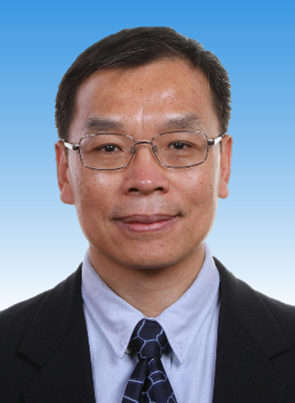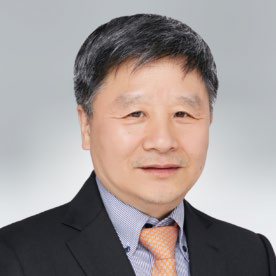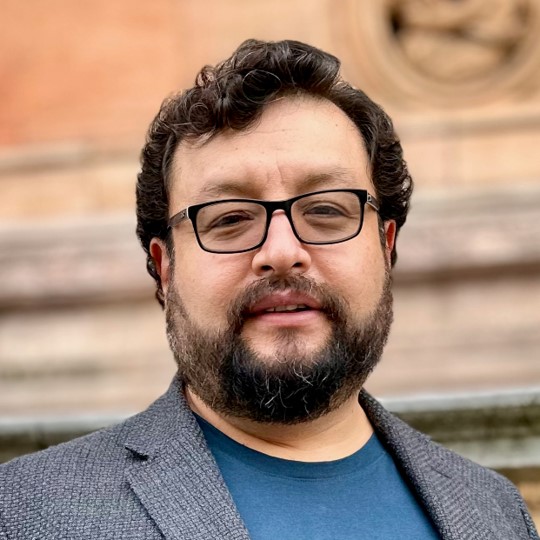
Dr. Troy Coyle
HERA, New ZealandBio: Troy
is the CEO of HERA, an impact-led independent research association based in
Aotearoa New Zealand. She is also the Co-Chair of Hanga-Aro-Rau (the Workforce
Development Council for Manufacturing, Engineering and Logistics) and a
Director of the Sustainable Steel Council, Steel Construction New Zealand and
HERA Certifications. She is an Impact Assessor for the Endeavour program and
holds advisory board roles for the Ministry of Innovation, Business and
Employment (Building System Performance), Auckland University of Technology and
the University of Auckland. She is the Impact Leader and creator of HERA’s
$10.3 million funded Construction 4.0 project and is passionate about
impact-led research, with a particular focus on sustainability, indigenous
knowledge, diversity and inclusion, and industry transformation.
Abstract: Engineering
research intersects with societal and industrial demands, making it
foundationally impact-led. This presentation will explore how to identify
impact-led research opportunities, build research capability and sectoral
impact. HERA, a small independent research association in Aotearoa New Zealand,
will be used as the case study to show that even small teams can have
meaningful research impact.

Prof. Lin-Hai Han
Tsinghua UniversityBio: Prof. Lin-Hai Han is a Tenured Professor at Tsinghua
University. He established the life-cycle-based analytical theory and design
methodology for concrete-filled steel tubular (CFST) structures. He is the
author/co-author of over 261 peer-reviewed international journal papers and the
sole or lead author of 7 books. He is among the top 4 scientists for
Career-Long Impact in the field of Civil Engineering, according to the latest
Stanford/Elsevier’s World’s Ranking of Top 2% Scientists. He was elected a
Fellow of IStructE, UK, and is entitled to use the title "Chartered
Structural Engineer". He is also a Fellow of ASCE, US and ICE, UK. He is
the founding Chair of the Subcommittee of Steel-Concrete Composite and Hybrid
Structures (TC 71/SC 9), International Organization for Standardization (ISO).
The practical applications of his research outcomes have been far-reaching and
widely adopted in the design of record-breaking construction projects. He is
the editor-in-chief of the National Standard of China GB/T 51446-2021, and the
first-ever ISO Standard on CFST structures, ISO 16521:2024. As the leading
researcher, he was awarded the China’s State Natural Science Award (Second
Prize) in 2019. He was the winner of the Prize for Scientific and Technological
Innovation from the Ho Leung Ho Lee Foundation, China in 2023. He is the recipient
of the ASCE Region 10 Distinguished Service Medal Award in 2024. He was awarded
the ISO Excellence Award by ISO in 2025, becoming “the first awardee in the
area of concrete materials and structures globally”.
Abstract: As a high-performance structure, the
concrete-filled steel tubular (CFST) structure has become one of the preferred
structural forms for China’s current major civil engineering constructions.
This report will present the nonlinear confinement effect of CFST structures,
the life-cycle-based constitutive models of the core concrete, and the
calculation framework for the resistances of CFST members. Concepts, main
forms, and the life-cycle-based analysis and design framework for CFST hybrid
structures will also be presented. Subsequently, the applications of the
research outcome in the main structure design of several iconic constructions,
including the CITIC Tower, the Canton Tower, and the Ganhaizi Mega Bridge, will
be elaborated. Finally, the National Standard of China and the ISO standard for
CFST structures will be introduced.

Prof. Guoqiang Li
Tongji UniversityBio: Guo-Qiang
Li is a distinguished professor of structural engineering in Tongji University,
the director of Research Center of Education Ministry of China for Steel
Construction and the director of National Research Center of China for
Pre-fabrication Construction. He is also
a vice-chairman of Chinese Society of Steel Construction and a vice-chairman of
Chinese Association of Construction Standardization. In addition, he is a foreign member of the
Royal Flemish Academy of Belgium for Science and the Arts, a fellow of
Institution of Structural Engineers in UK and a fellow of the Council of Tall
Buildings and Urban Habitat.
Abstract: The unexpected collapse of burning buildings has
been a major killer of firefighters, since current techniques are very hard to
accurately evaluate the collapse risk of a real building in fire. Developing a
practical approach for early-warning fire-induced collapse of steel buildings
in real-time is an urgent need, as these buildings account for a large part of
collapse accidents due to severe degradation of steel mechanical properties at elevated
temperatures in fire. The uncertainties of a burning building, such as load
levels and heating conditions which differ from designed values, and the
real-time acquisition of its structural responses to fire are two challenging
issues need to be addressed. Through parametric analysis of collapse mechanisms
considering uncertainties in real fire, the limited potential collapse modes of
steel portal frames and steel trusses porpularly used for steel buildings are identified.
Displacement responses of the burning building at key positions of the building
structure, identified as Key Physical Parameters (KPPs), are selected for early
warning fire-induced building collapse, as these displacements exhibit unique
variation patterns for each collapse mode. Three-level early-warning strategy is
proposed based on evolution laws of KPPs during the process of the building
collapse. As some KPPs are hard to be measured directly in fire scene,
especially for those located on the roof or inside the building, real-time
acquisition method of the hard-to-measure KPPs through easy-to-measure data are
investigated. Considering the close correlation between rotations and
displacements at structural nodes at definite temperatures, pre-embedded
thermocouples and inclinometers, which are easily employed in practice, are
proposed to facilitate the real-time acquisition of hard-to-measure KPPs. Real
fire tests have been conducted to verify the effectiveness of the approach for
early-warning fire-induced collapse of steel portal frame and steel truss
buildings.

Prof. Brian Uy
The University of New South Wales, SydneyBio: Brian
Uy is Scientia (Distinguished) Professor of Structural Engineering in the
School of Civil and Environmental Engineering at the University of New South
Wales. Brian has delivered over 100 plenary/keynote/invited lectures and has
been involved in research in steel and composite structures for over 35 years.
He has co-authored over 700 publications including over 300 refereed journal
articles. Brian is Chairman of the Standards Australia Committee BD-032 on
Composite Building Structures and BD-090-06 on Steel and Composite Bridge
Structures and Chief Editor (Asia-Pacific) of Steel and Composite Structures.
He is currently President-Elect and Vice President of the Institution of
Structural Engineers (IStructE) and will become the 105th President of IStructE
in 2026. Brian is also the Australian Chairman and Vice President of the
International Association of Bridge and Structural Engineering (IABSE). Brian
is an elected Fellow of the Australian Academy of Technological Sciences and
Engineering, Engineers Australia, Royal Society of NSW, Institution of
Structural Engineers, Institution of Civil Engineers, American Society of Civil
Engineers, Structural Engineering Institute and the International Association
of Bridge and Structural Engineers.
Abstract: This
keynote paper reflects on the key foci in the area of the mechanics of
structures and materials in the past, present and future. The paper
commemorates the First Australasian Conference on the Mechanics of Structures
and Materials (ACMSM) at The University of New South Wales from August 21-23,
1967. The paper then reflects on the key issues in the area of the
mechanics of structures and materials at present and posits what will be some
of the key issues for the future. Using the area of steel-concrete composite
construction, the issues of the mechanics of structures and materials will be
further highlighted in relation to real applications in the past, present and
future.

Christian Málaga-Chuquitaype
Imperial College LondonBio: Christian
Málaga-Chuquitaype is an Associate Professor in Dynamics and Seismic
Engineering in the Department of Civil and Environmental Engineering at
Imperial College London. He leads the department’s efforts in earthquake
engineering, and is actively involved in teaching, specialist advisory work,
and guiding a diverse research group focused on emerging structural
technologies. His research interests span structural testing, computational
modelling, AI, and the assessment of structures under extreme conditions—from
earthquake-prone regions to extra-terrestrial environments. Christian serves as
an Associate Editor for two international journals, sits on several other
editorial boards, and contributes to multiple code committees involved in
international standards development and the advancement of engineering
practice. His work has been recognised with several awards, including the Best
Research Paper Prize from the Institution of Structural Engineers (IStructE),
the Tso Kung Hsieh Award from the Institution of Civil Engineers (ICE), and the
Unwin Prize from Imperial College London.
Abstract: This lecture explores how controlled rocking,
rolling isolation, and rotational inertial devices are reshaping dynamic
control strategies for building structures, with special focus on their
application to modern timber systems. It examines how stepping away from
traditional fixed-base assumptions, embracing motion, and harnessing inertial
forces to our advantage can enable efficient, low-damage solutions for seismic
protection. The talk will delve into the fundamental mechanics and emerging
engineering concepts behind rocking and rolling systems, highlight the role of
inerters as force amplifiers and "size shifters," and demonstrate how
their integration enhances seismic performance. Special emphasis will be laced
on how these strategies are unlocking the seismic potential of engineered
timber structures. Drawing on recent advances in numerical modelling and
experimental earthquake engineering, this lecture invites you to view seismic
control not as a battle against motion, but as a carefully choreographed rock
‘n’ roll performance allowing timber to play a starring role in the next
generation of resilient, sustainable structures.